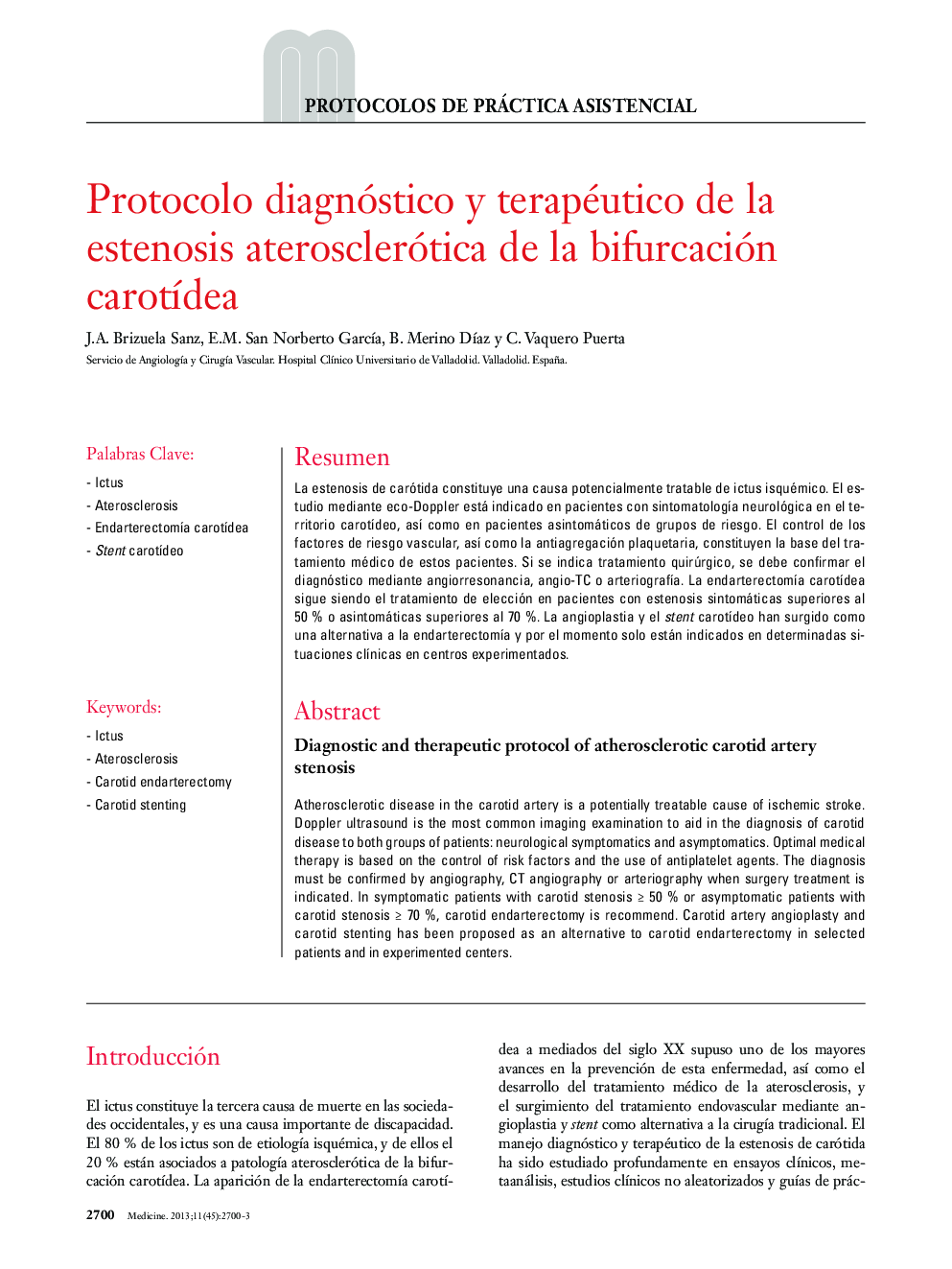| Article ID | Journal | Published Year | Pages | File Type |
|---|---|---|---|---|
| 3805871 | Medicine - Programa de Formación Médica Continuada Acreditado | 2013 | 4 Pages |
ResumenLa estenosis de carótida constituye una causa potencialmente tratable de ictus isquémico. El estudio mediante eco-Doppler está indicado en pacientes con sintomatología neurológica en el territorio carotídeo, así como en pacientes asintomáticos de grupos de riesgo. El control de los factores de riesgo vascular, así como la antiagregación plaquetaria, constituyen la base del tratamiento médico de estos pacientes. Si se indica tratamiento quirúrgico, se debe confirmar el diagnóstico mediante angiorresonancia, angio-TC o arteriografía. La endarterectomía carotídea sigue siendo el tratamiento de elección en pacientes con estenosis sintomáticas superiores al 50 % o asintomáticas superiores al 70 %. La angioplastia y el stent carotídeo han surgido como una alternativa a la endarterectomía y por el momento solo están indicados en determinadas situaciones clínicas en centros experimentados.
Atherosclerotic disease in the carotid artery is a potentially treatable cause of ischemic stroke. Doppler ultrasound is the most common imaging examination to aid in the diagnosis of carotid disease to both groups of patients: neurological symptomatics and asymptomatics. Optimal medical therapy is based on the control of risk factors and the use of antiplatelet agents. The diagnosis must be confirmed by angiography, CT angiography or arteriography when surgery treatment is indicated. In symptomatic patients with carotid stenosis ≥ 50 % or asymptomatic patients with carotid stenosis ≥ 70 %, carotid endarterectomy is recommend. Carotid artery angioplasty and carotid stenting has been proposed as an alternative to carotid endarterectomy in selected patients and in experimented centers.
